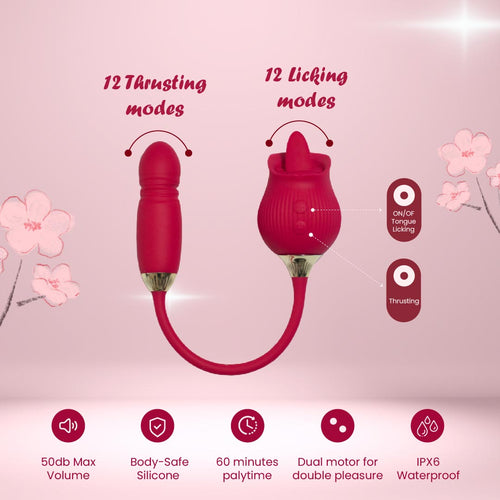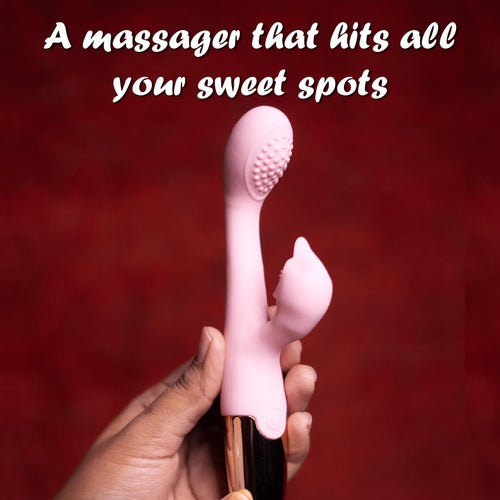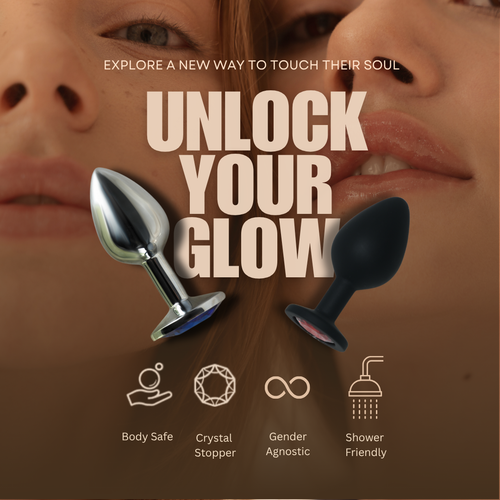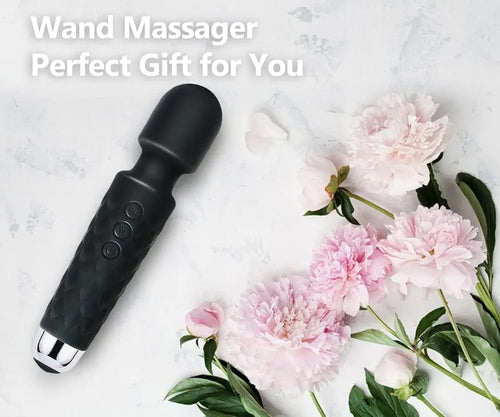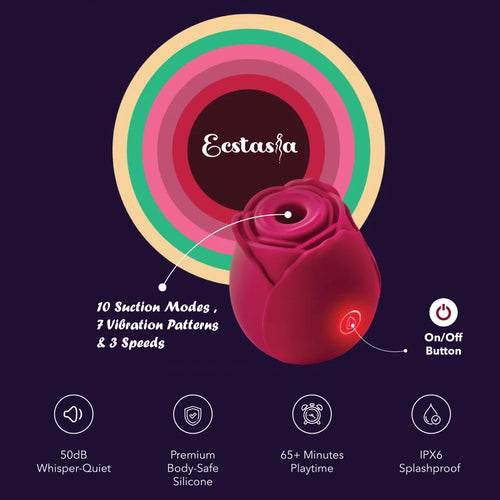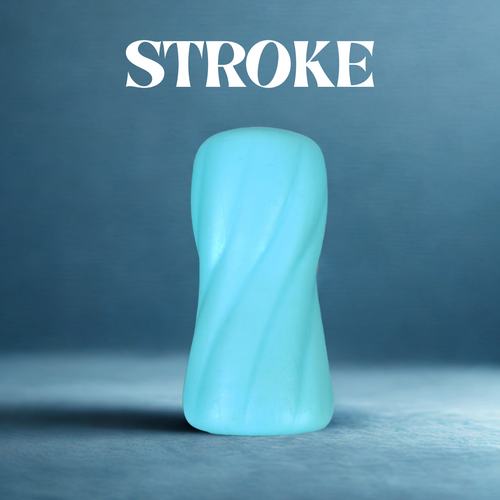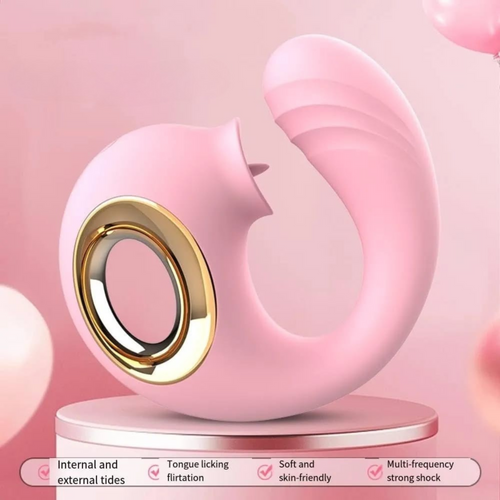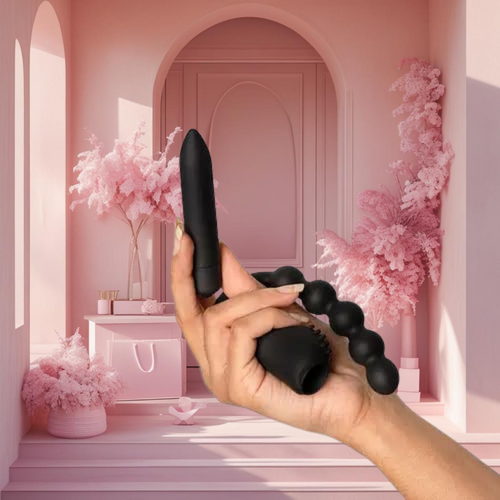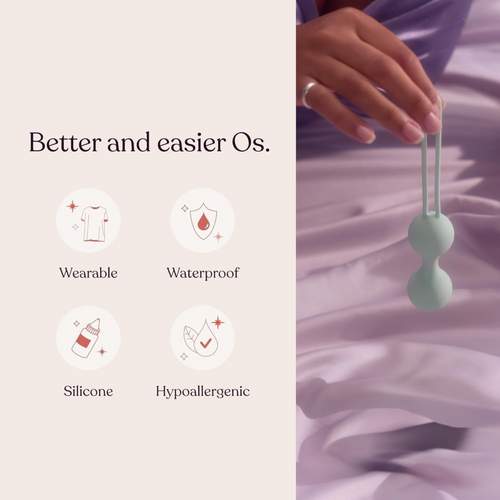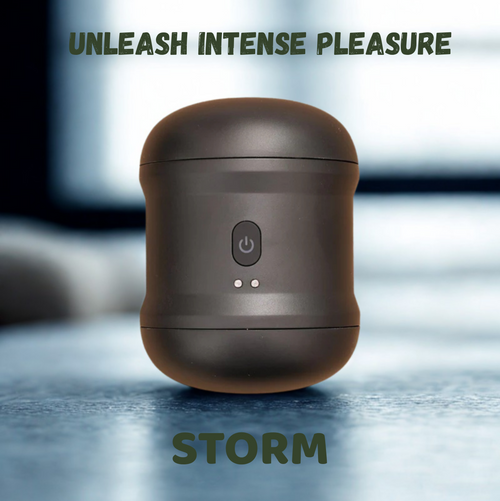
5 Questions to Ask Yourself Before Buying a New Sex Toy
You're scrolling through pages of shiny new sex toys, credit card in hand, when that voice in your head asks, "Do I really need another vibrator that looks like an alien spaceship?"
Let's be real. Most of us have bought at least one sex toy that now collects dust in the back of our drawer—a $90 mistake we don't talk about at dinner parties.
Before you click "add to cart" on your next bedroom accessory, there are five essential questions about buying a new sex toy that could save you money, disappointment, and that awkward conversation with your roommate about the mysterious package.
By the end of this post, you'll know exactly how to pick toys you'll actually use instead of hide. But first, let's talk about the question most people never consider until it's way too late...
Is This Material Safe for My Body?
Understanding Body-Safe Materials vs. Harmful Chemicals
Look, not all sex toys are created equal. Some materials can actually harm your body, especially in sensitive areas. Silicone (medical-grade), glass, ABS plastic, and stainless steel are generally considered body-safe. They're non-porous, meaning bacteria can't penetrate and hide in them.
Avoid materials like jelly, rubber, and PVC. These often contain phthalates, which are chemicals that can mess with your hormones. They're also porous and can harbor bacteria even after cleaning. When a toy smells strongly of chemicals or feels sticky, that's your red flag to stay away.
Checking for Proper Certifications
Quality manufacturers won't shy away from proving their products are safe. Look for toys that explicitly state they're "phthalate-free" and "body-safe." Some reputable brands will have certifications like ISO 7494 or FDA approval for their silicone products.
Don't just take their word for it though. If a product claims to be silicone but costs suspiciously little, it might be a silicone blend with potentially harmful fillers.
Researching Brand Reputation for Safety
Do a quick Google search before buying. Brands with solid reputations typically have:
-
Transparent material descriptions
-
Clear washing instructions
-
Detailed product information
-
Positive customer reviews about safety
-
History of addressing safety concerns
Companies that hide behind vague descriptions or use terms like "novelty use only" are often avoiding liability for poor-quality materials.
Identifying Potential Allergic Reactions
Your body might have specific sensitivities even to generally safe materials. Common allergic reactions include:
-
Redness or rash
-
Burning sensation
-
Itching
-
Swelling
If you have known allergies to latex, consider whether a toy has latex components. Some lubricant residues on toys can also trigger reactions, so check compatibility when purchasing.
Evaluating Durability and Longevity
Safety isn't just about immediate reactions—it's also about how a product holds up over time. Quality materials maintain their integrity:
-
Silicone shouldn't tear easily
-
Glass shouldn't have bubbles or cracks
-
Metal shouldn't tarnish or corrode
-
Plastic shouldn't have sharp seams or edges
Cheap toys often break down faster, potentially leaving harmful pieces behind or developing surface issues that can harbor bacteria or cause injuries.
Does This Match My Personal Needs and Preferences?
A. Identifying Your Specific Desires and Interests
Shopping for a sex toy without knowing what you want is like walking into a restaurant with no idea what you're hungry for. You'll end up overwhelmed and probably unsatisfied.
Start by asking yourself what sensations you enjoy. Do you crave deep penetration? Pinpoint clitoral stimulation? Gentle vibrations or intense pulsations? Maybe you're curious about anal play or G-spot exploration?
Think about your fantasies too. What turns you on when you're alone with your thoughts? Your desires are your roadmap in this journey.
B. Considering Size, Shape, and Intensity Levels
Size absolutely matters—but only in relation to your comfort level. A toy that's perfect for someone else might be too much or too little for you.
For beginners, smaller is usually better. Veterans might prefer something with more presence. And remember—those product photos can be deceiving!
Shape is equally crucial. Curved toys reach different spots than straight ones. Textured surfaces create different sensations than smooth ones.
As for intensity—many toys offer multiple levels. If you're sensitive, look for products with gentle starting points. If you need serious power, check reviews specifically mentioning intensity.
C. Matching Features to Your Experience Level
Newbies: Start simple. Single-function toys with intuitive controls make for stress-free exploration.
Intermediate players: Look for versatility. Toys with multiple settings let you discover new sensations without buying a whole new collection.
Advanced enthusiasts: Consider app-controlled options, toys with memory functions, or models offering unique stimulation patterns.
Whatever your level, prioritize features that genuinely excite you—not just the ones that sound impressive in marketing copy.
How Will I Clean and Maintain This Product?
A. Understanding Proper Cleaning Methods
Cleaning your sex toy isn't just about hygiene—it's about making sure your investment lasts. Different materials demand different cleaning approaches. Silicone, glass, and metal toys? Super easy—warm water and mild soap will do the trick. But porous materials like TPE or cyberskin? Those need extra attention since they can harbor bacteria in their tiny holes.
Never just rinse and toss your toy back in the drawer. Take an extra minute to properly clean it before and after each use. Many toys come with specific cleaning instructions, so check the manual instead of guessing. And please, don't use harsh chemicals or alcohol-based cleaners—they can damage your toy and potentially harm your body.
B. Storage Requirements for Longevity
Your toy deserves better than being thrown into a random drawer. Proper storage extends its life dramatically. Most quality toys come with storage pouches—use them! They protect against dust, lint, and damage.
Store different materials separately. Silicone toys shouldn't touch each other as they can create chemical reactions that degrade the material. Keep toys in cool, dry places away from direct sunlight, which can break down materials over time.
C. Compatibility with Lubricants
This is crucial: using the wrong lube can destroy your toy. Silicone toys and silicone lube? Bad combo—they'll bond together and ruin the surface. Water-based lubes are generally safe for all materials, while oil-based options work for some but not others.
Here's a quick guide:
|
Toy Material |
Water-Based |
Silicone-Based |
Oil-Based |
|
Silicone |
✓ |
✗ |
✗ |
|
Glass |
✓ |
✓ |
✓ |
|
Metal |
✓ |
✓ |
✓ |
|
TPE/Rubber |
✓ |
✗ |
✗ |
D. Replacement Parts Availability
Before buying, check if the toy has parts that might need replacing. Rechargeable batteries eventually die—can you replace them, or is the toy done for? Some high-end toys offer replacement parts like charging cables, attachments, or even motors.
This is especially important for pricier items. Nothing worse than spending $150 on a toy that becomes useless when a small component fails. Companies with good warranty policies and available replacement parts show they stand behind their products.
What's My Budget Considering Quality and Lifespan?
Balancing Cost vs. Quality
The sex toy market spans from $10 vibrators to $300 luxury models. But here's the truth: you often get what you pay for. That cheap buzzy toy might save you money today but could leave you disappointed or shopping again next month when it breaks.
Quality toys typically use body-safe materials like medical-grade silicone, which costs more but won't leach chemicals into your most sensitive areas. Higher-end toys also tend to offer stronger motors, longer battery life, and features like multiple intensity levels that actually enhance pleasure.
That said, expensive doesn't always mean better. Some mid-range options ($50-100) offer excellent quality without the premium markup. The sweet spot differs for everyone based on how frequently you'll use it and what features matter most.
Identifying Hidden Costs
Don't forget about the extras! Some toys require:
-
AA batteries that need constant replacing
-
Proprietary charging cables that cost $20+ if lost
-
Special cleaning solutions
-
Storage pouches or cases
-
Replacement parts like detachable heads
All these add up over time, making that initially cheaper toy potentially more expensive long-term.
Warranty and Return Policies Worth Having
A good warranty signals manufacturer confidence. Look for:
-
At least 1-year coverage
-
Protection against motor failure
-
Clear return processes
-
Discretion in packaging and billing
Some companies offer amazing customer service, replacing defective toys with minimal questions. Others make returns nearly impossible. Research their policies before buying—it could save you from being stuck with an expensive paperweight.
How Discreet Is This Product?
A. Noise Level Considerations
Ever been mid-session when your roommate suddenly knocks to ask if everything's okay? Yeah, awkward. Noise levels matter more than you might think. Before clicking "buy," check reviews specifically mentioning sound. Many manufacturers claim "whisper-quiet" operation when they're actually more "mildly concerning household appliance" loud.
For vibrators, deeper rumbling vibrations tend to be quieter than buzzy ones. Also consider when you'll use it—that "barely audible" toy might sound like a lawnmower at 2am when the house is silent. Pro tip: toys with multiple intensity settings give you options when noise discretion is needed.
B. Privacy in Packaging and Delivery
Most reputable companies now ship in plain brown boxes—no giant "SUPER PLEASURE DEVICE INSIDE" labels. Check the retailer's shipping policy before ordering. Look for terms like "discreet billing" too, so your credit card statement doesn't read "AMAZING SEX TOYS INC."
Some companies go the extra mile with packaging that looks like beauty products or tech gadgets. Perfect if you're not ready to explain your purchase to curious housemates who love opening packages left in the common area.
C. Storage and Travel Convenience
That realistic 12-inch dildo might be your dream toy, but where will you keep it? Consider your living situation and storage options. Do you have private drawer space? A lockable box?
For travelers, think about size and TSA encounters. Smaller, non-phallic shapes cause less awkwardness if your bag gets searched. Many rechargeable toys now come with travel locks to prevent embarrassing buzzing incidents in your luggage. Battery-operated options mean no charging cables to explain.
D. Digital Privacy (For App-Connected Devices)
Smart toys collect data—sometimes lots of it. Before connecting your most intimate moments to the internet, check the company's privacy policy. Look for end-to-end encryption and anonymized data collection.
App permissions matter too. Does that vibrator app really need access to your contacts and location? Probably not. Choose companies with clear data policies and opt-out options. Remember that convenience features like pattern customization come with potential privacy trade-offs. Only connect if you trust the company with your most private moments.
Conclusion
Making an informed decision about a new pleasure product requires thoughtful consideration. By asking yourself these five crucial questions about body safety, personal preferences, cleaning requirements, budget considerations, and discretion, you can navigate the vast options available with confidence and select something that truly enhances your intimate experiences.
Remember that the best purchase is one that prioritizes your health, comfort, and specific desires. Take your time researching, don't hesitate to ask retailers questions, and invest in products that will provide lasting satisfaction rather than short-term excitement. Your intimate well-being deserves this level of care and attention.

